American Sniper Case Study
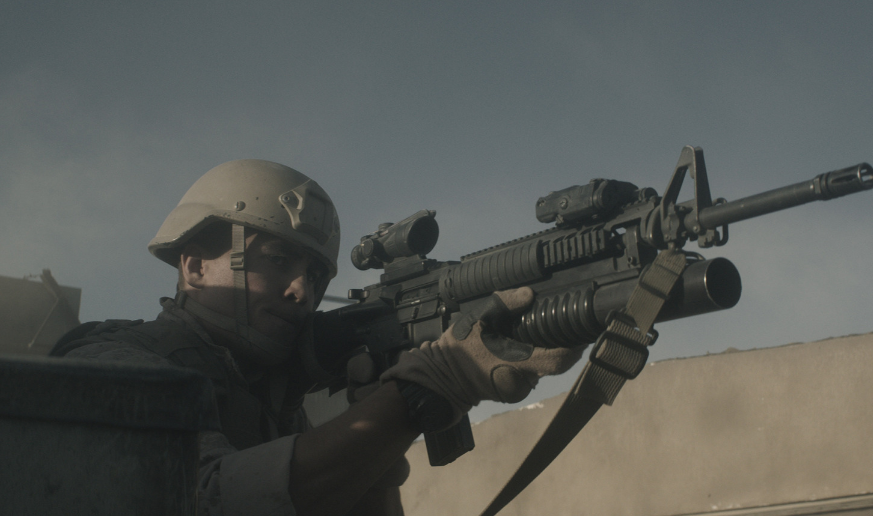
Case Study
Tasked with executing approximately 150 shots in just under nine weeks, Image Engine’s work on “American Sniper” brought depth, atmosphere and character to the Clint Eastwood directed picture.
The film, based on the autobiographical book of the same name by US Navy SEAL Chris Kyle, follows the soldier as he struggles to balance multiple tours of duty in Iraq with being a good father and husband.
A gritty, realistic and suspenseful action drama, American Sniper needed a wide range of visual effects work integrated seamlessly into the film, in order to have the impact Eastwood and frequent collaborator (and visual effects supervisor) Michael Owens wanted.
Image Engine made up a quarter of the VFX studios on the project, handling some heavy duty compositing and putting together one of the most crucial story elements in the entire movie a huge dust storm that rolls in off the desert just as a climactic fire fight breaks out.
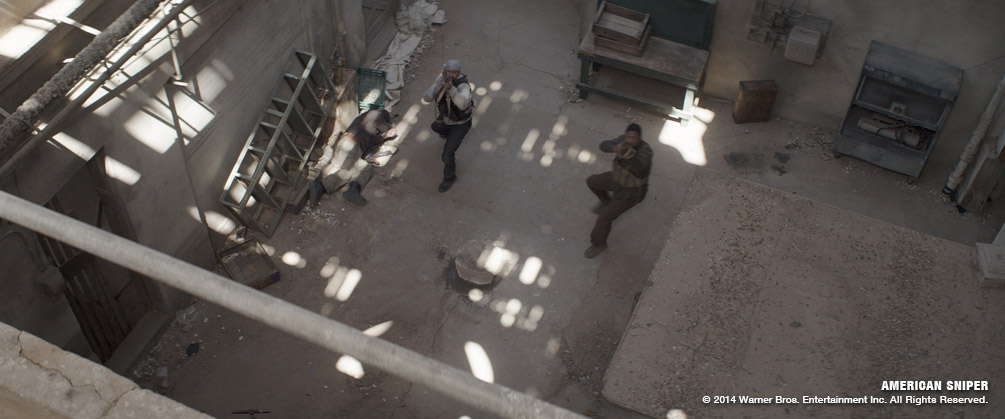
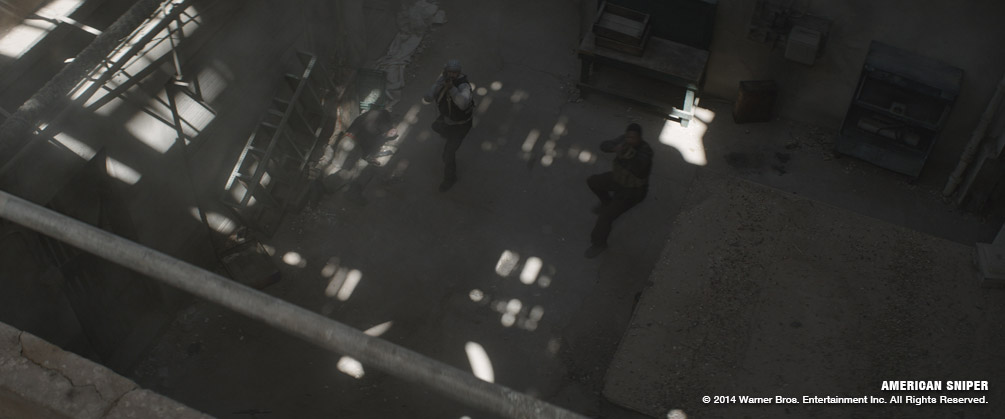
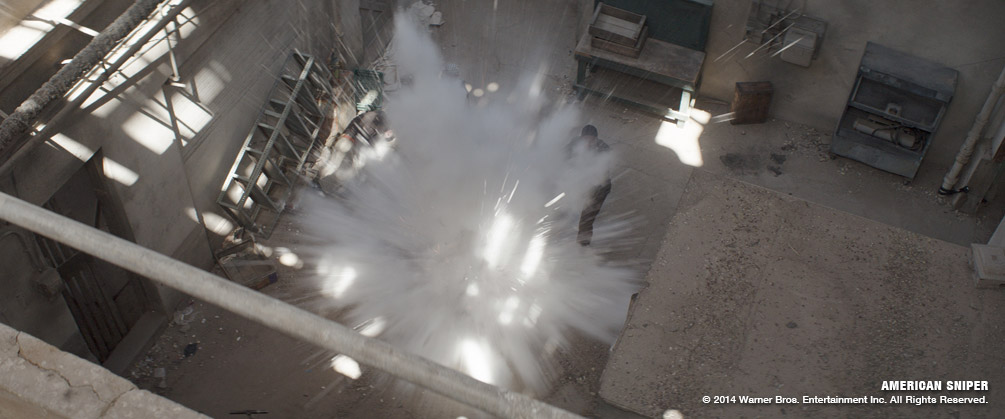

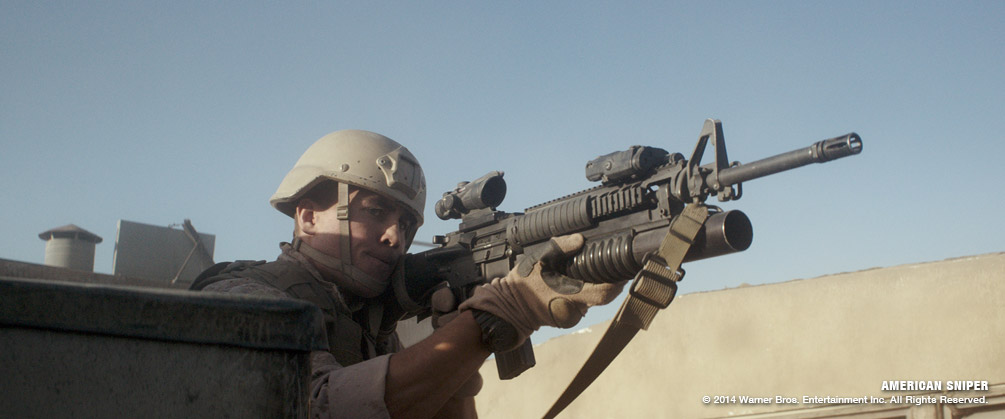
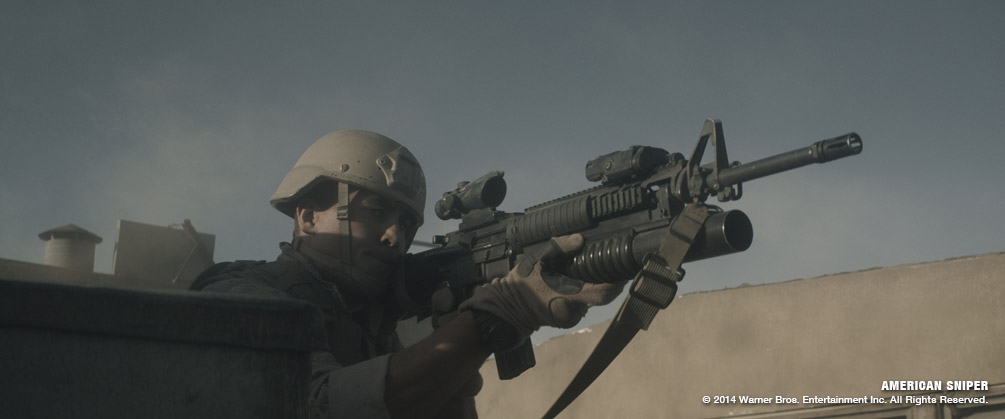

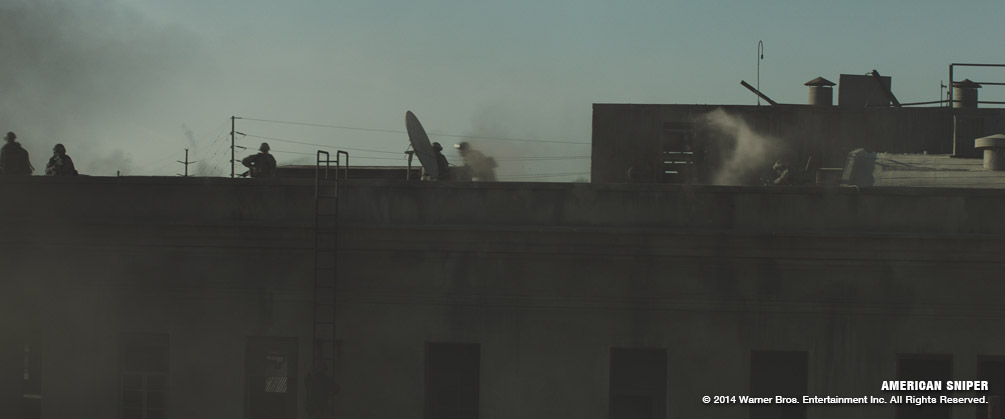
Narrative Impact
More than just a background element, the dust storm acted like a visual metaphor for the fog of war. With such a vast front encroaching on the battlefield, pushing with it a concussive wall of air and whipping up dust in the environment, the drama was increased many times over.
Image Engine’s work is used to improve both atmosphere and drive the story. By the time the dust-covered firefight begins, visual effects has contributed to building up a dramatic setting.
Making sure this important plot element had the desired impact required a lot of work shot in Southern California, Image Engine had to work on plates with a lot of directional sunlight, reflections and highlights in them, which made the integration of the dust effects all the more difficult.
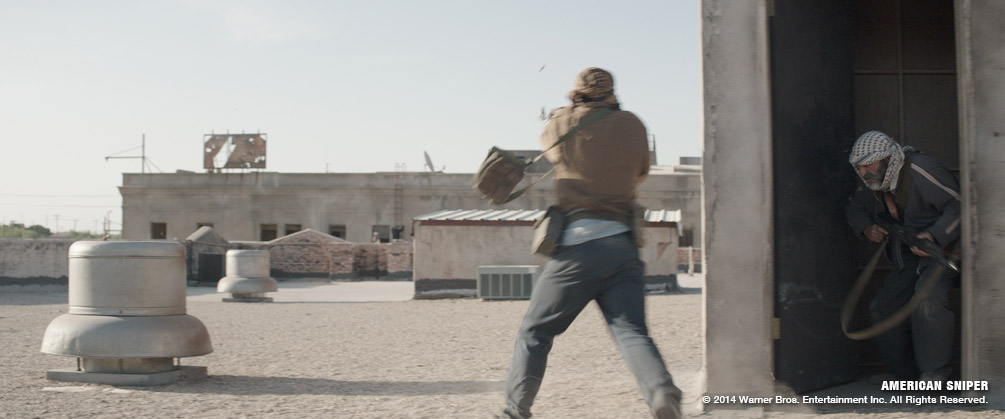
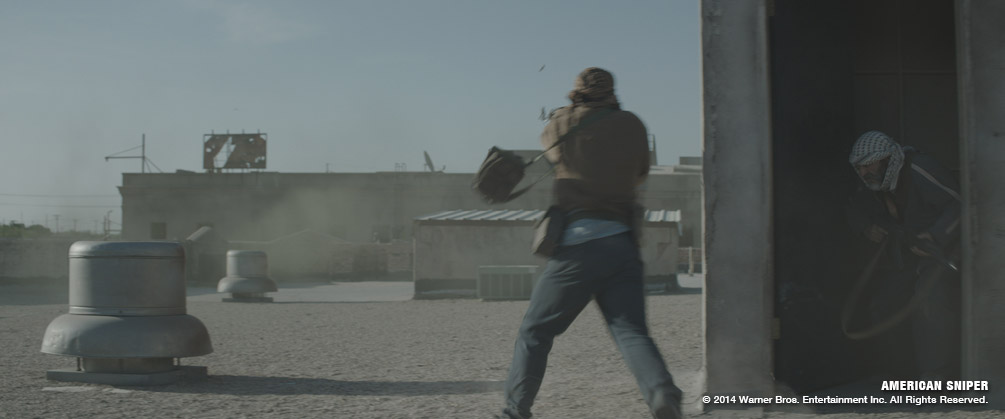

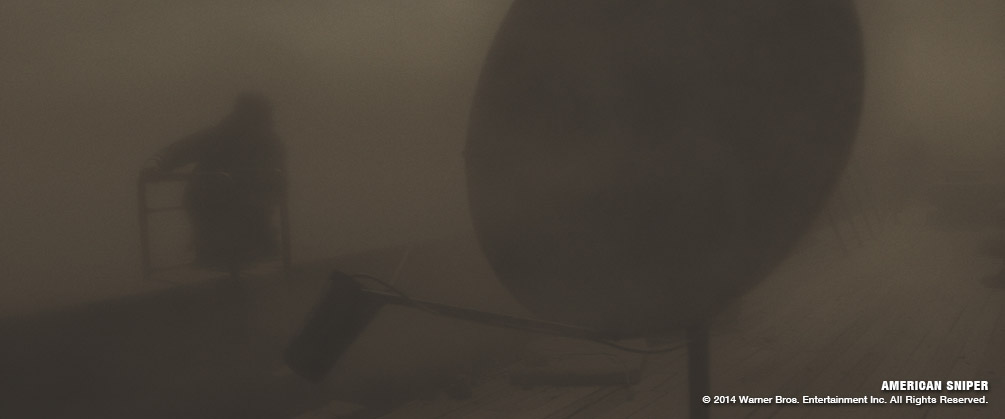
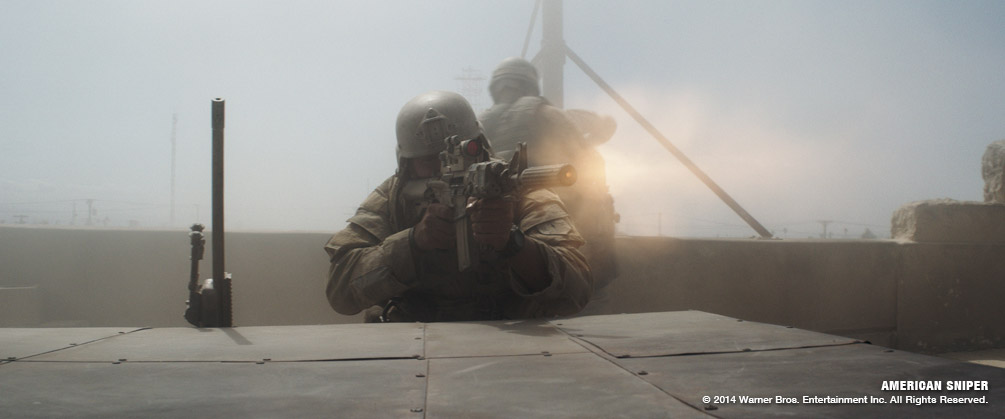
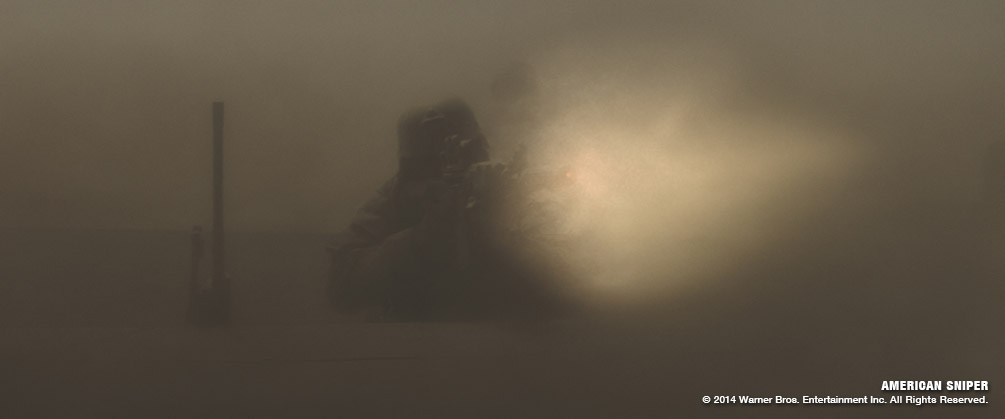
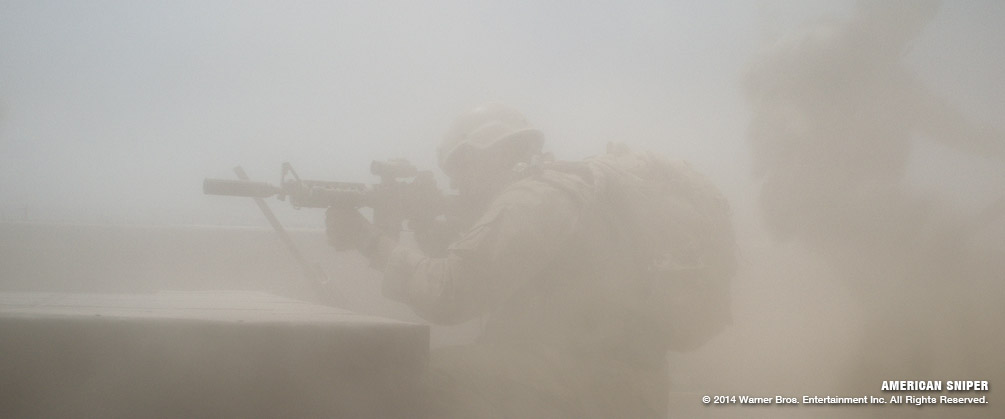
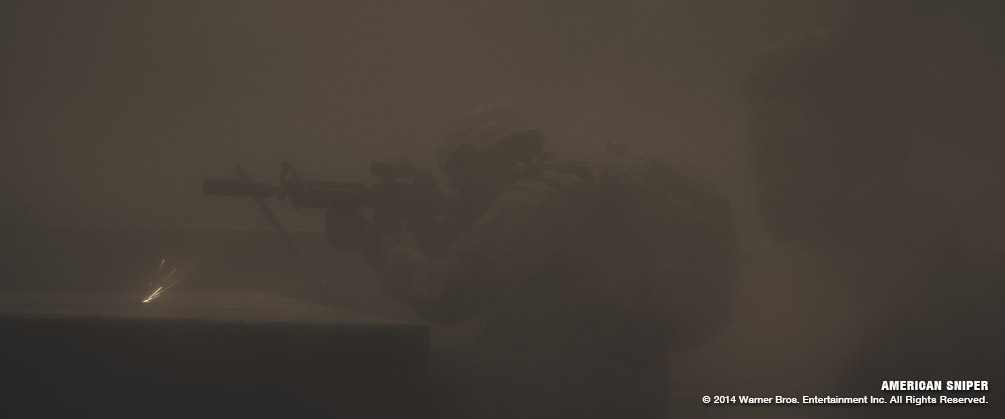
Coloring the Storm
Miles Lauridsen, Compositing Supervisor at Image Engine, explained: “When the storm hit, we moved into getting the look of the sequence. We kept going heavier and darker; we had to just pull down everything in the live action photography.”
This overall adjustment enhanced the visual metaphor that the encroaching storm represented in the film. “This wasn’t a move to crush the highlights”, Lauridsen continued, “instead it was intended to bring the highlights down in a smooth, naturalistic way.”
“The process was problematic on a few shots,” Laurisden said, “Because the actors and sets were very highlighted, lots of reflections, all kinds of pings off rifles and stuff like that. That was challenging!”
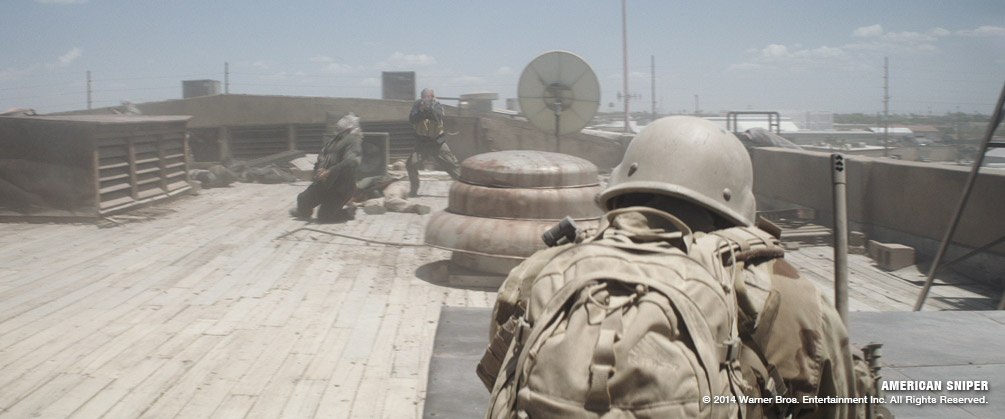
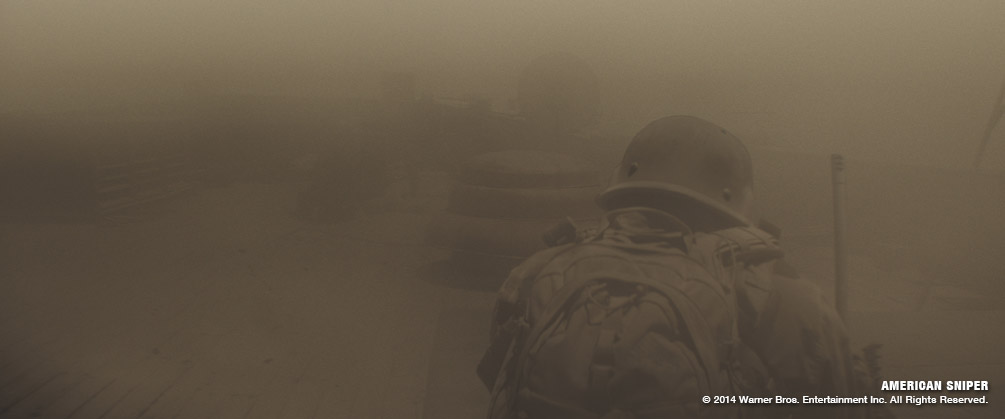
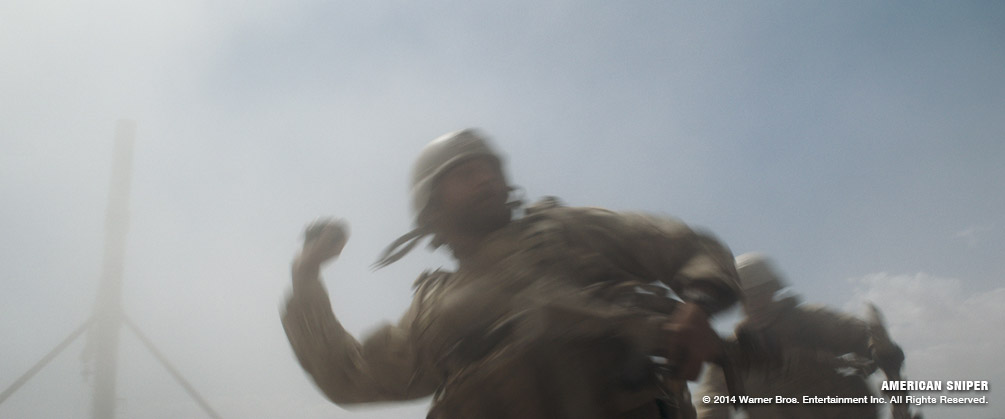
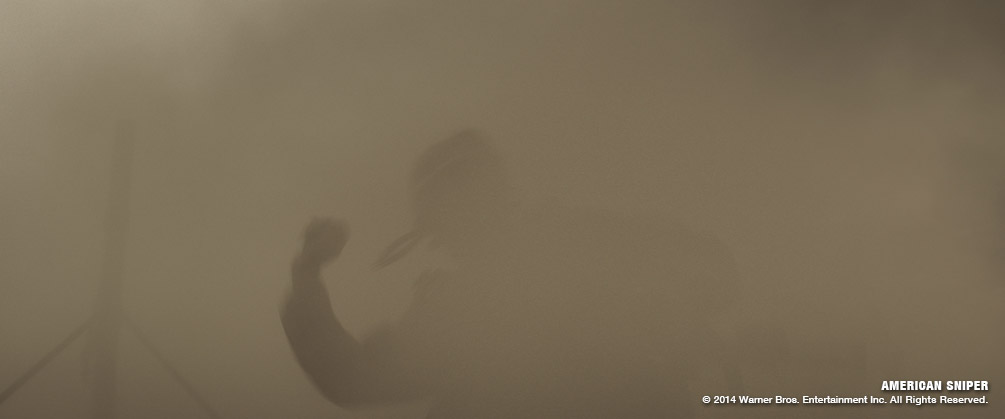

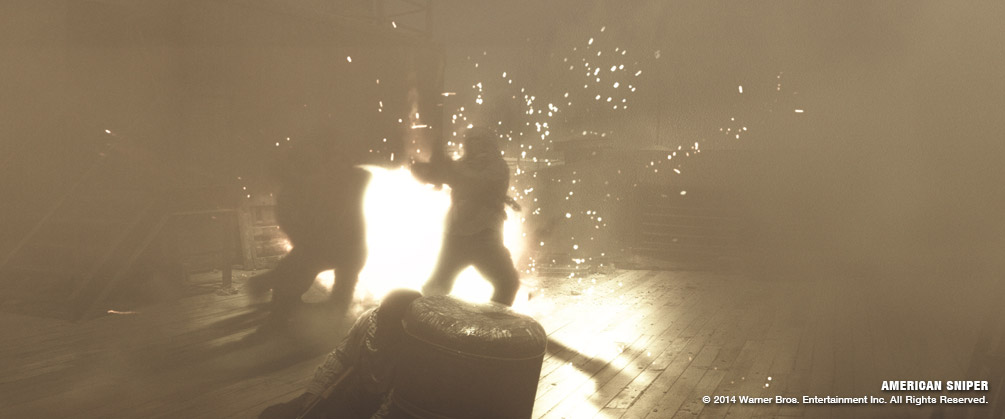
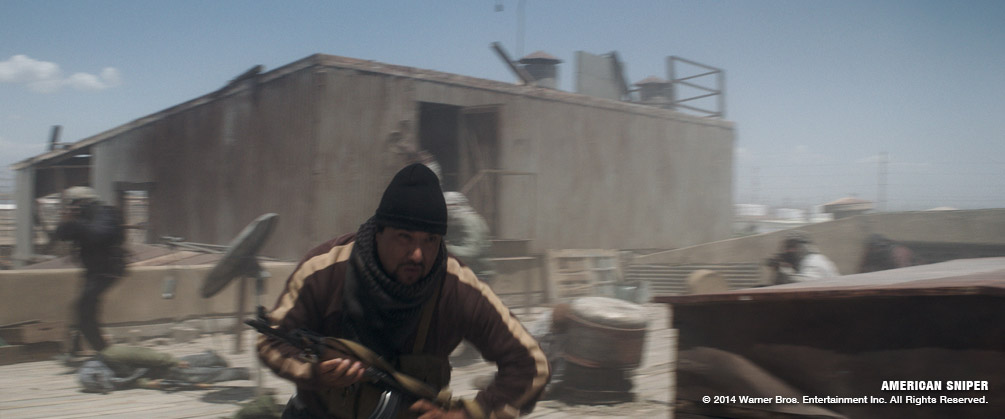
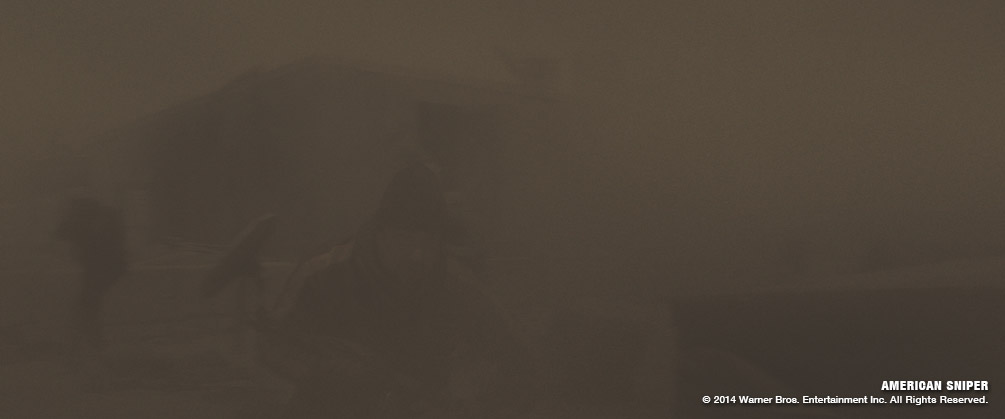
Working in Tandem
The steps taken by around 20 compositors working on American Sniper at Image Engine involved looking at how to bring the highlights down, in order to establish a base level. Color correction and layering was carried out in a progression, with staff also having to balance the needs of their shots with what was being produced from other studios working on the movie.
Sharing 43 shots with MPC, and in particular 8 where a distant computer generated dust storm was approaching, the project became a process of back-and-forth collaboration and iteration. Lauridsen explained: “They would take the plate and as they started iterating with Michael [Owens] they would send us over a temp of where the dust storm was in the sky, so we could make sure if we needed to add a little additional atmosphere type dust in between that then we would know exactly where that needed to happen.”
“When they were finally done they would send us over their elements and any lens distortion that we needed…. That process actually went fairly smoothly.”
Working alongside another studio’s pipeline is always going to introduce challenges, but Image Engine’s biggest hurdle with American Sniper was time itself. With both Image Engine and MPC pushing forward aggressively to the finish, it was a challenge to go back and forth with updates and revisions. Even with such a hurdle in the way, both studios were able to work together effectively.
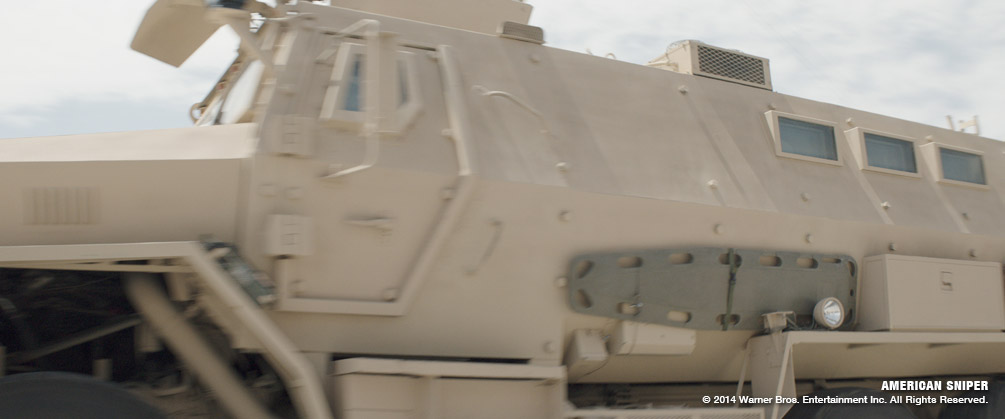
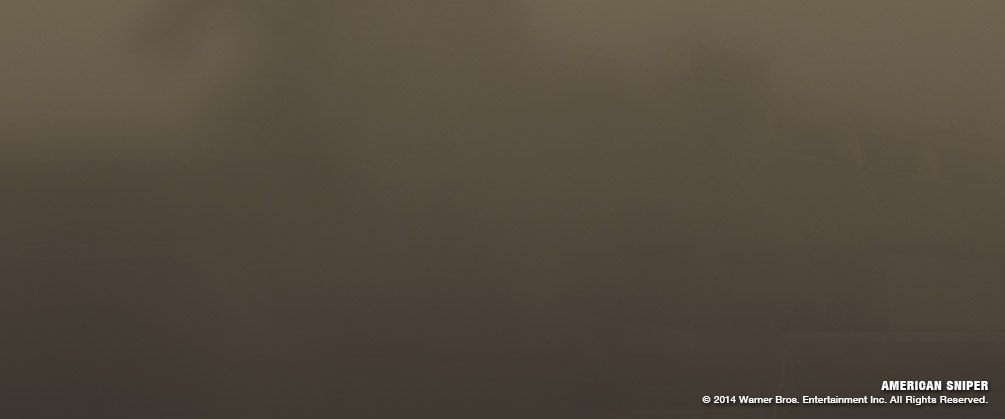
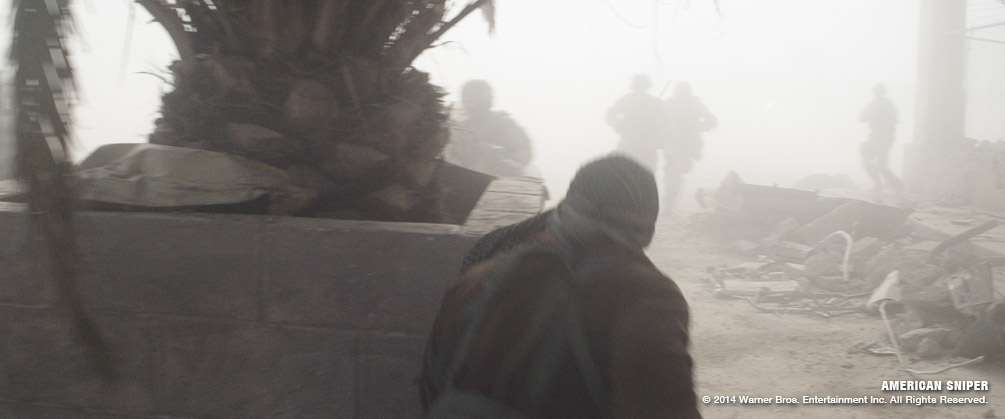


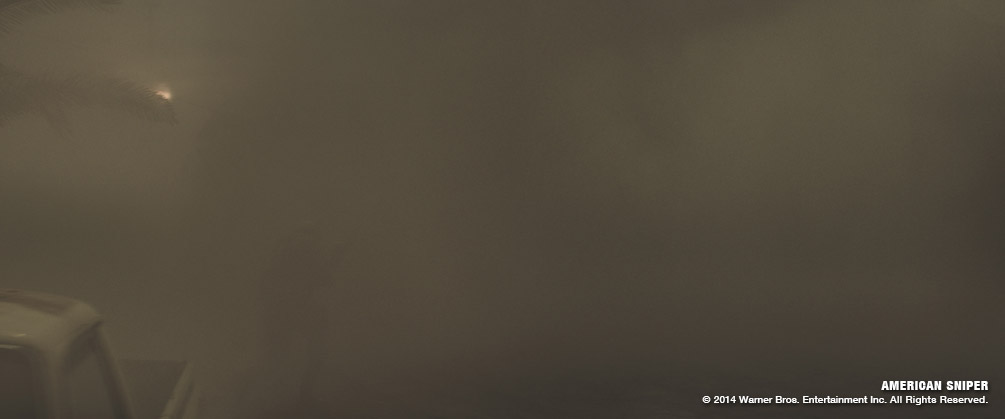
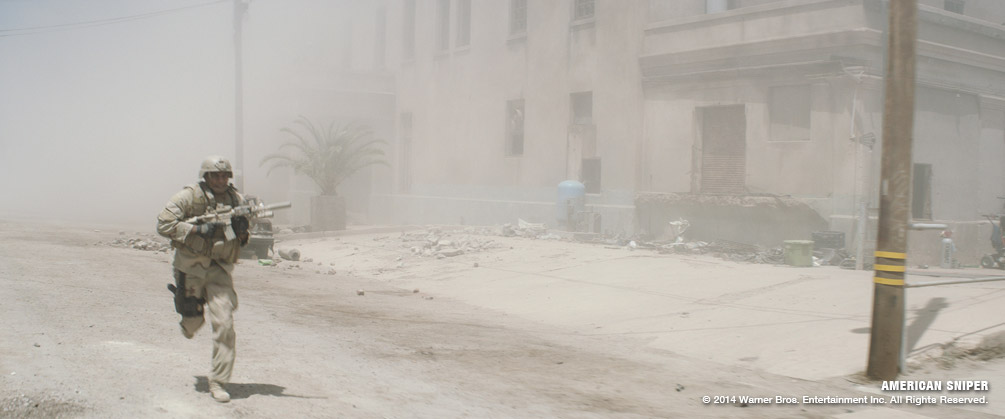
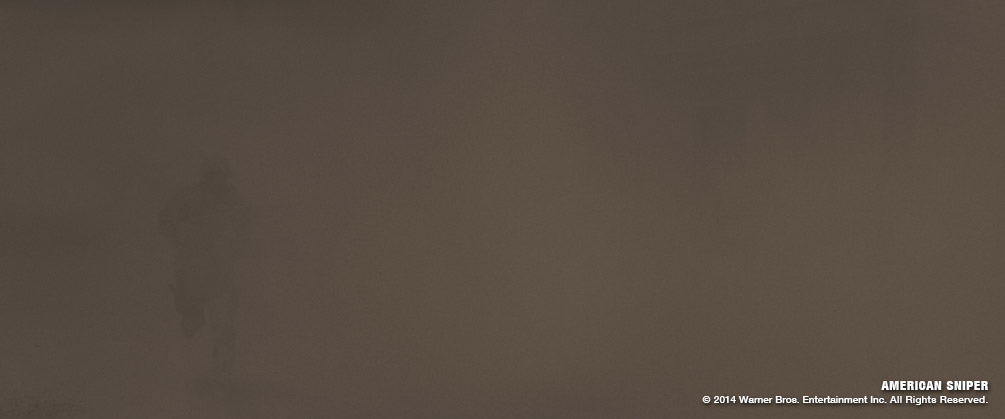
Seamless Augmentation
As well as working on the integral dust storm, Image Engine also worked on other effects moments involving a mix of practical and physical. One saw a grenade explosion being augmented with effects simulation and additional debris, taking a practical event the best that could be done on the day and making it fit in the film.
A second shot also involved a grenade, as Lauridsen explained: “They literally had a basic action plate of some stunt guys miming that a grenade had landed nearby and they had been blown back that was really successful, because if you look at the plate compared to our end result it’s a huge difference, but it has this very believable, seamless feel to that rapid but small, intense concussion of a grenade.”
Image Engine’s work on American Sniper was mainly carried out using NUKE 8 – the first time The Foundry’s software was used by the studio and in-house review tool Rev.
Check out Image Engine’s R&D page for more information on in-house tools.
The most important creative factors of Image Engine’s work always came back to its narrative impact, though. Lauridsen explained: “Clint and Michael were adamant our effects work is always about revealing the moments that we need to see to progress the story. The storm obscures the fire fight, and so obscures these moments we only see glimpses of these guys.”
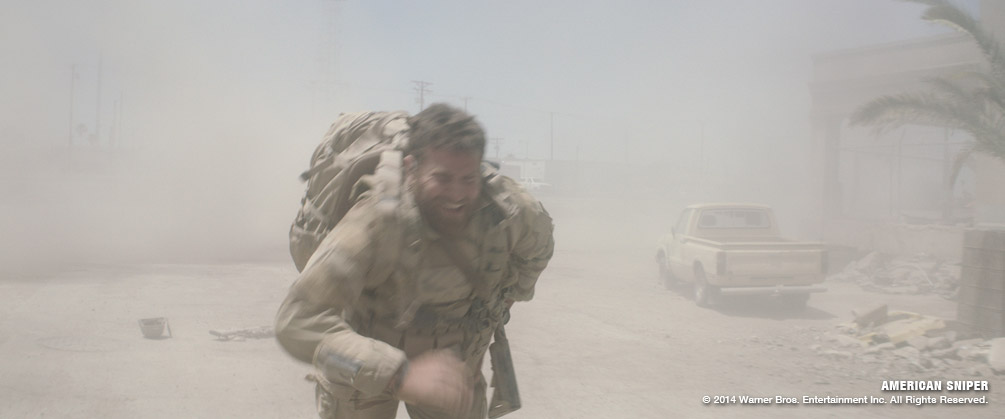

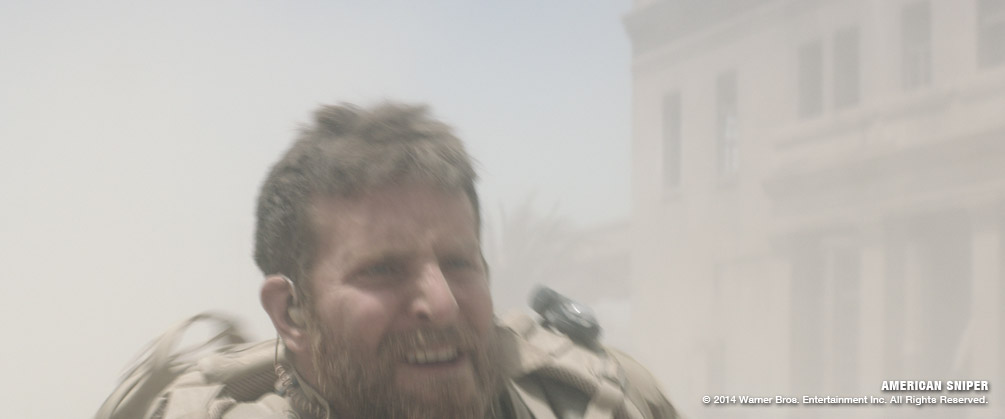
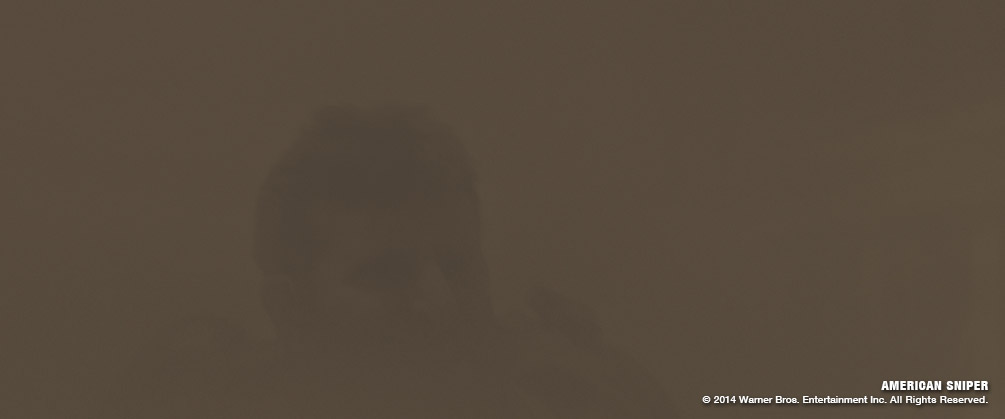
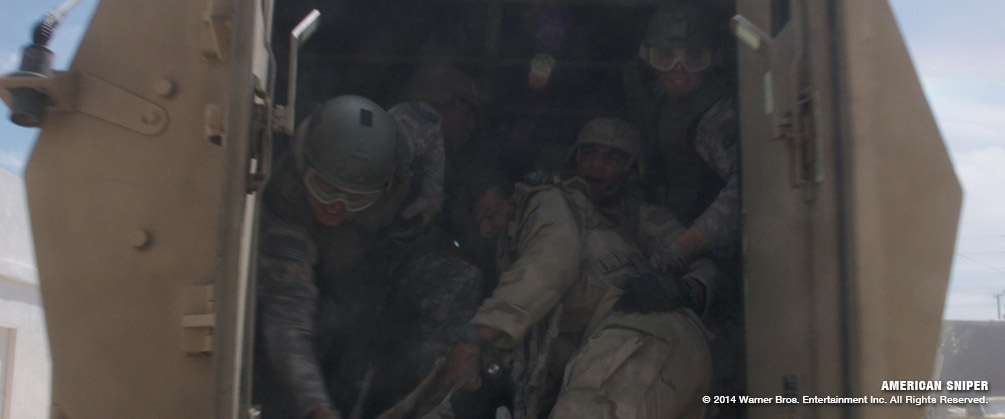

Understanding the Edit
The storm would shroud those moments literally and figuratively ramping up the tension and helping the film to hit its narrative beats through clever use of visual effects. And the Image Engine team was able to put its own input into American Sniper, with an atmosphere of collaboration prevalent throughout production.
“Michael Owens is really smart in that sense,” Lauridsen said, “He really understands the edit and the storm as an overall visual metaphor was the main thing we’re trying to achieve, just to hit those beats that the editor and Clint have set out there and to find smaller moments that increase tension at the right times. It was a back and forth with Michael, trying to both find it on our end and then listen to what he was saying, what he knew intuitively that Clint wanted.”
Owens reciprocated the praise, saying to the team: “Thank you so very much for the diligent, thorough, hardworking and wonderful job that the Image Engine team have done. I’m extremely appreciative.”
Producer Rob Lorenz, Clint Eastwood and Warner Bros. were left very happy with Image Engine’s work on American Sniper. With similar work carried out on other “911” projects Image Engine has proven once more it is a studio capable of handling short term, highprofile and complex projects that get thrown its way.

